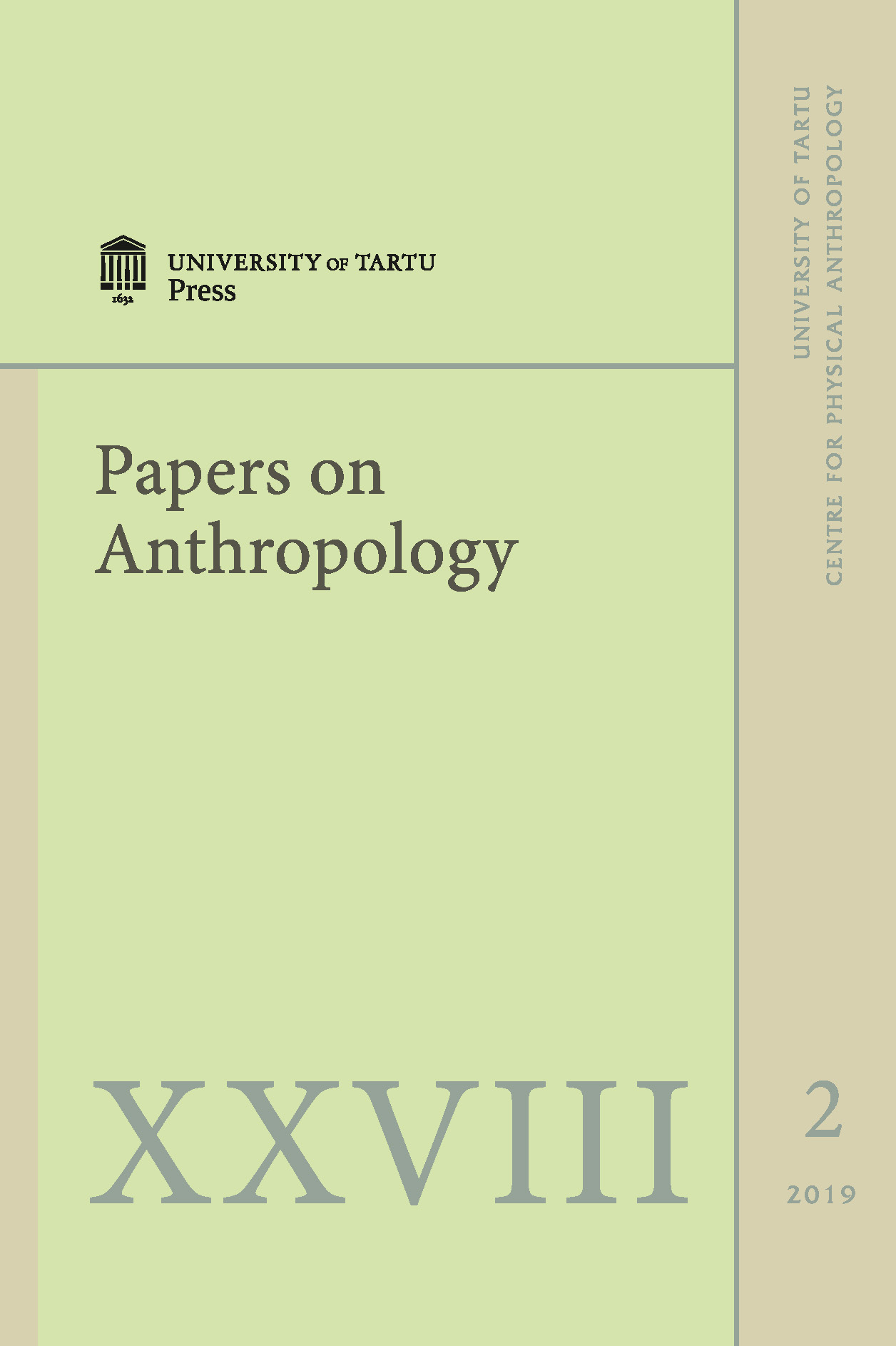Anthropometric characteristics of females in different age groups in Latvia from childhood to adulthood
DOI:
https://doi.org/10.12697/poa.2019.28.2.06Keywords:
anthropometric indicators for women, body mass dynamics in postnatal ontogenesis, changes in body mass index at different agesAbstract
The purpose of the present study was to evaluate changes in main anthropometric parameters such as height, body mass, and body circumferences (chest, upper arm) in different age groups from childhood to adulthood in healthy females in Latvia and to determine the active growing age periods and the impact of tobacco use on anthropometric parameters. We provided a health well-being questionnaire concerning lifestyle and tobacco use. In the present study, we assessed the body mass index (BMI) values to identify body mass index-defined overweight and obesity. The levels of the body mass index exceeded the standard data only in a small number of the examined persons. Body composition data and the body mass index are used as an index of obesity as a standard practice by many clinicians according the recommendations of health authorities as a basis for health behaviour and physical activities to preserve physical and mental health. A significant correlation has been previously reported between anthropometric characteristics, physical activity and health capacity. The study data were collected with the participants’ informed consent. Statistical analysis was performed using a statistics program. The body mass index is the respondents’ major characteristic which describes the physical condition and nutrition level in any age group. Tobacco use by the mother during the pregnancy period has an influence on the child’s body mass and body mass index values that were fixed for girls in the 1st and 2nd childhood periods. Intensive increase in anthropometric parameters was observed during the transition from the adolescence to the youth period.

